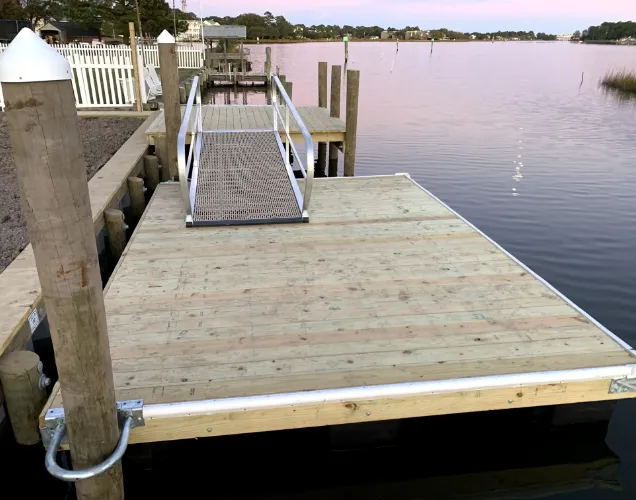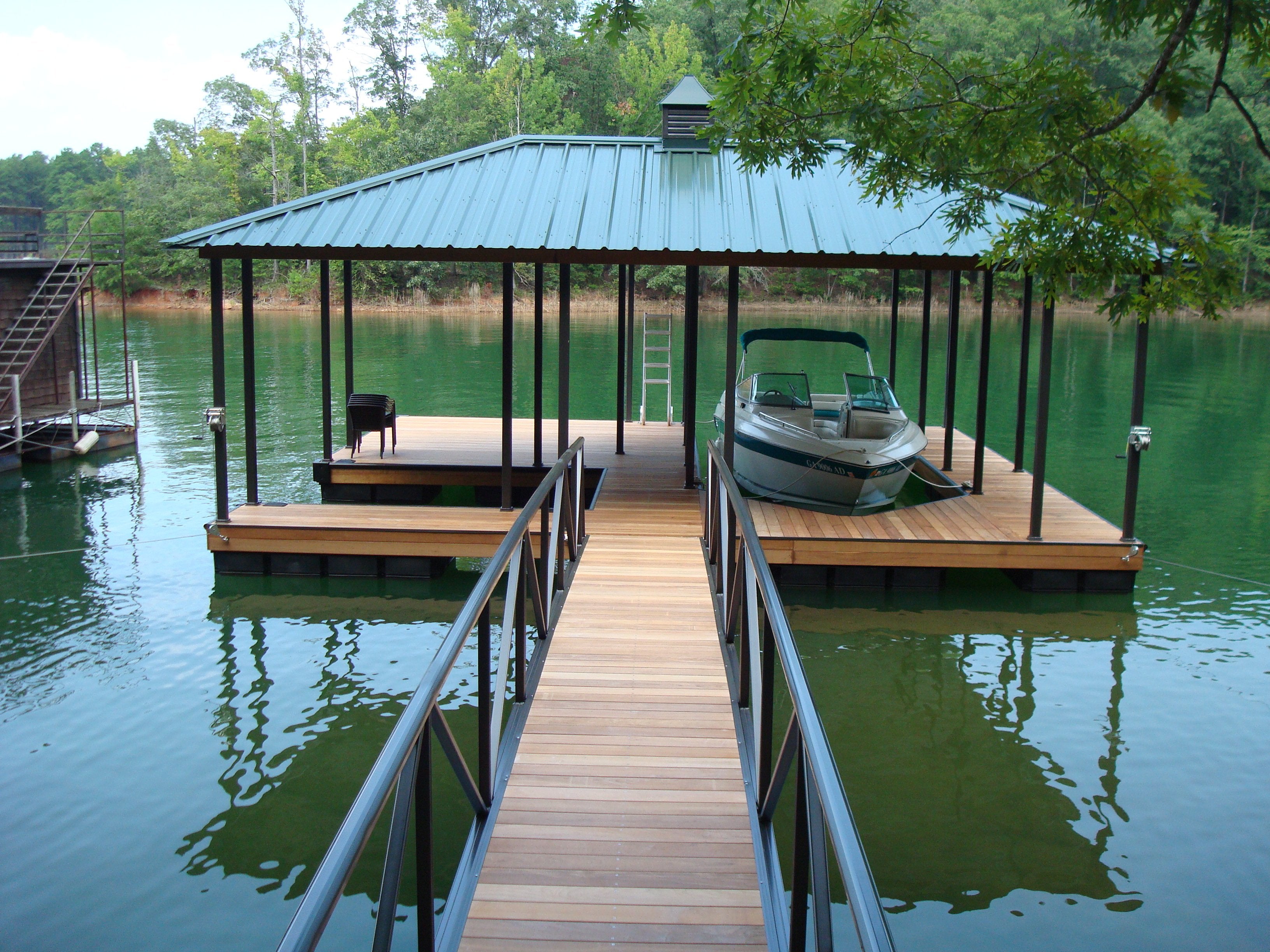Create the Perfect Docking Option With Floating Docks
Floating docks present a functional remedy for a range of maritime demands, adapting perfectly to changing water degrees and varied vessel types. As we check out the essential elements that add to the effectiveness of floating docks, several vital factors regarding security and upkeep will certainly emerge, raising inquiries concerning how to enhance your docking experience.

Advantages of Floating Docks
Floating docks deal countless advantages that make them a suitable option for various maritime applications. Unlike dealt with docks, floating docks increase and fall with the tide, ensuring constant access for vessels.
Furthermore, floating docks are typically simpler and quicker to set up compared to conventional fixed structures. Their modular design permits simple assembly and disassembly, assisting in maintenance and moving when needed. This flexibility is specifically beneficial for temporary applications or in atmospheres where problems might alter.
Floating docks likewise often tend to be much more eco-friendly, as they reduce disruption to the seabed and bordering aquatic environments. Their buoyant nature decreases the danger of damage to aquatic life, promoting a healthier atmosphere. These docks can be personalized to suit different vessel dimensions, making sure that they meet specific functional demands.
Inevitably, the combination of flexibility, convenience of installation, and ecological factors to consider makes floating docks a very effective option for a vast array of maritime needs.
Choosing the Right Materials
Picking the appropriate materials for floating docks is crucial to make sure durability, stability, and durability. The option of products straight influences the dock's performance in different ecological problems, including direct exposure to water, sunshine, and prospective wear from marine web traffic.
Typical products used for floating docks include aluminum, wood, and high-density polyethylene (HDPE) Aluminum is light-weight, corrosion-resistant, and calls for marginal upkeep, making it an excellent choice for longevity. Its first price can be greater contrasted to other products.
Timber, while aesthetically appealing and providing a traditional look, can be at risk to rot and pest damage if not properly dealt with. Using pressure-treated timber or normally resilient species like cedar or redwood can minimize these problems.
HDPE is a popular selection because of its resistance to UV rays and chemicals, together with being environmentally pleasant. floating dock services. It is lightweight and available in various shades, permitting modification
Eventually, the right product choice will certainly depend on certain requirements, consisting of budget, preferred looks, and environmental factors to consider. Careful analysis of these elements will certainly lead to a effective and resistant floating dock solution.
Style Factors To Consider for Stability
When creating floating docks, guaranteeing security is a basic aspect that can dramatically affect their functionality and safety and security. Stability in floating dock layout is influenced by various factors, consisting of buoyancy, weight circulation, and the plan of read here parts.
Weight circulation is crucial; evenly dispersing tons across the dock avoids tilting and boosts security. Larger designs can offer raised security, especially in rough water conditions, while longer docks might require added supports to prevent drooping.
Another key factor to consider is the environmental influence, consisting of wave action and wind. Including functions such as sidewalls or skirting can help mitigate the impacts of environmental pressures, maintaining security in unfavorable conditions. Eventually, a combination of thoughtful layout, material selection, and understanding of ecological elements will certainly produce a drifting dock that satisfies both security and security needs.
Setup Tips and Strategies

Following, safeguard the essential authorizations and stick to neighborhood laws, which might determine setup techniques and environmental considerations. Involve a certified specialist experienced in floating dock setups if required. Use top notch products developed for marine environments to enhance toughness and durability.
When positioning the dock, align it identical to the coastline to help with very easy access. Make certain that the anchoring system is durable, employing concrete blocks or helical supports to stabilize the dock versus wind and wave activity. It's important to account for seasonal water degree variations, consisting of potential ice activity in chillier climates.
Throughout the installation, ascertain the dock's floatation and stability prior to finalizing the anchoring. Frequently examine the installation for any type of signs of wear or damages. By following these pointers and methods, you can achieve a safe and secure, useful, and visually pleasing floating dock installment that satisfies your requirements.
Maintenance and Treatment Standards
Maintaining and caring for floating docks is crucial to extending their life-span and ensuring risk-free use. Normal inspections ought to be carried out to recognize any signs of wear, damage, or marine growth. Seek cracks, loose fittings, or tarnished locations on the dock's surface area, as these concerns can compromise structural honesty.
Cleaning is crucial. Use a stress washer to click this site get rid of algae, barnacles, and particles, which can gather over time. For stubborn development, consider eco-friendly cleaner that will not harm water life.
Furthermore, examine the mooring lines and supports regularly to ensure they are complimentary and safe and secure from corrosion. Replace any torn or harmed lines without delay to preserve security.
During extreme weather, such as tornados or freezing problems, take precautionary steps. Secure the dock with additional mooring lines and, if viable, get rid of any kind of detachable components to avoid damages.
Verdict
In conclusion, the execution of floating docks presents a reliable and flexible docking remedy suitable for numerous maritime applications. With appropriate installation and routine maintenance, floating docks can supply efficient and trusted docking experiences for a large array of vessels.
As we explore the necessary elements that contribute to the efficiency of floating docks, several essential variables relating to stability and maintenance will arise, elevating questions about exactly how to enhance your docking experience. Unlike dealt with docks, floating docks rise and fall with the tide, making sure regular access for vessels.When designing floating docks, ensuring stability is an essential element that can substantially influence their capability and safety and security. Security in floating dock layout is affected by numerous variables, consisting of buoyancy, weight circulation, and the setup of components. Ultimately, a combination of thoughtful design, material selection, and understanding of environmental factors will generate a floating dock that satisfies both stability and security requirements.
Comments on “Advantages of Collaborating With a Developed Floating Dock Company for Assurance”